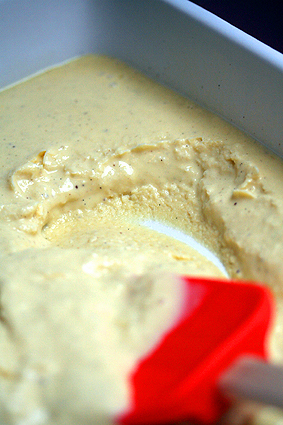Based on generic structure and language feature dominantly used, texts are divided into several types. They are narrative, recount, descriptive, report, explanation, analytical exposition, hortatory exposition, procedure, discussion, review, anecdote, spoof, and news item. These variations are known as GENRES.
NARRATIVE
Purpose: To amuse/entertain the readers and to tell a story
Generic Structure:
1. Orientation
2. Complication
3. Resolution
4. Reorientation
Dominant Language Features:
1. Using Past Tense
2. Using action verb
3. Chronologically arranged
RECOUNT
Purpose: to retell something that happened in the past and to tell a series of past event
Generic Structure:
1. Orientation
2. Event(s)
3. Reorientation
Dominant Language Features:
1. Using Past Tense
2. Using action verb
3. Using adjectives
Narrative and recount in some ways are similar. Both are telling something in the past so narrative and recount usually apply PAST TENSE; whether Simple Past Tense, Simple Past Continuous Tense, or Past Perfect Tense. The ways narrative and recount told are in chronological order using time or place. Commonly narrative text is found in story book; myth, fable, folklore, etc while recount text is found in biography.
The thing that makes narrative and recount different is the structure in which they are constructed. Narrative uses conflicts among the participants whether natural conflict, social conflict or psychological conflict. In some ways narrative text combines all these conflicts. In the contrary, we do not find these conflicts inside recount text. Recount applies series of event as the basic structure
DESCRIPTIVE
Purpose: to describe a particular person, place or thing in detail.
Dominant Generic Structure:
1. Identification
2. Description
Language Features:
1. Using Simple Present Tense
2. Using action verb
3. Using adverb
4. Using special technical terms
REPORT
Purpose: to presents information about something, as it is.
Generic Structure
1. General classification
2. Description
Dominant Language Feature
1. Introducing group or general aspect
2. Using conditional logical connection
3. Using Simple Present Tense
EXPLANATION
Purpose: To explain the processes involved in the formation or working of natural or socio-cultural phenomena.
Generic Structure:
1. General statement
2. Explanation
3. Closing
Dominant Language Features:
1. Using Simple Present Tense
2. Using action verbs
3. Using passive voice
4. Using noun phrase
5. Using adverbial phrase
6. Using technical terms
7. Using general and abstract noun
8. Using conjunction of time and cause-effect.
ANALYTICAL EXPOSITION
Purpose: To reveal the readers that something is the important case
Generic Structure:
1. Thesis
2. Arguments
3. Reiteration/Conclusion
Dominant Language Features:
1. Using modals
2. Using action verbs
3. Using thinking verbs
4. Using adverbs
5. Using adjective
6. Using technical terms
7. Using general and abstract noun
8. Using connectives/transition
HORTATORY EXPOSITION
Purpose: to persuade the readers that something should or should not be the case or be done
Generic Structure:
1. Thesis
2. Arguments
3. Recommendation
Dominant Language features:
1. Using Simple Present Tense
2. Using modals
3. Using action verbs
4. Using thinking verbs
5. Using adverbs
6. Using adjective
7. Using technical terms
8. Using general and abstract noun
9. Using connectives/transition
Then what is the basic difference between analytical and hortatory exposition. In simple word. Analytical is the answer of "How is/will" while hortatory is the answer of "How should". Analytical exposition will be best to describe "How will student do for his examination? The point is the important thing to do. But for the question" How should student do for his exam?" will be good to be answered with hortatory. It is to convince that the thing should be done
PROCEDURE
Purpose: to help readers how to do or make something completely
Generic Structure:
1. Goal/Aim
2. Materials/Equipments
3. Steps/Methods
Dominant Language Features:
1. Using Simple Present Tense
2. Using Imperatives sentence
3. Using adverb
4. Using technical terms
DISCUSSION
Purpose: to present information and opinions about issues in more one side of an issue (‘For/Pros’ and ‘Against/Cons’)
Generic Structure:
1. Issue
2. Arguments for and against
3. Conclusion
Dominant Language Features:
1. Using Simple Present Tense
2. Use of relating verb/to be
3. Using thinking verb
4. Using general and abstract noun
5. Using conjunction/transition
6. Using modality
7. Using adverb of manner
REVIEW
Purpose: to critique or evaluate an art work or event for a public audience
dominant Generic Structure:
1. Orientation
2. Evaluation
3. Interpretative Recount
4. Evaluation
5. Evaluative Summation
Dominant Language features:
1. Focus on specific participants
2. Using adjectives
3. Using long and complex clauses
4. Using metaphor
ANECDOTE
Purpose: to share with others an account of an unusual or amusing incident
Generic Structure:
1. Abstract
2. Orientation
3. Crisis
4. Reaction
5. Coda.
Dominant Language Features:
1. Using exclamations, rhetorical question or intensifiers
2. Using material process
3. Using temporal conjunctions
SPOOF
Purpose: to tell an event with a humorous twist and entertain the readers
Generic Structure:
1. Orientation
2. Event(s)
3. Twist
Dominant Language Features:
1. Using Past Tense
2. Using action verb
3. Using adverb
4. Chronologically arranged
NEWS ITEM
Purpose: to inform readers about events of the day which are considered newsworthy or important
Dominant Generic Structure:
1. Newsworthy event(s)
2. Background event(s)
3. Sources
Dominant Language Features:
1. Short, telegraphic information about story captured in headline
2. Using action verbs
3. Using saying verbs
4. Using adverbs : time, place and manner
source: www.understaingtext.blogspot.com














